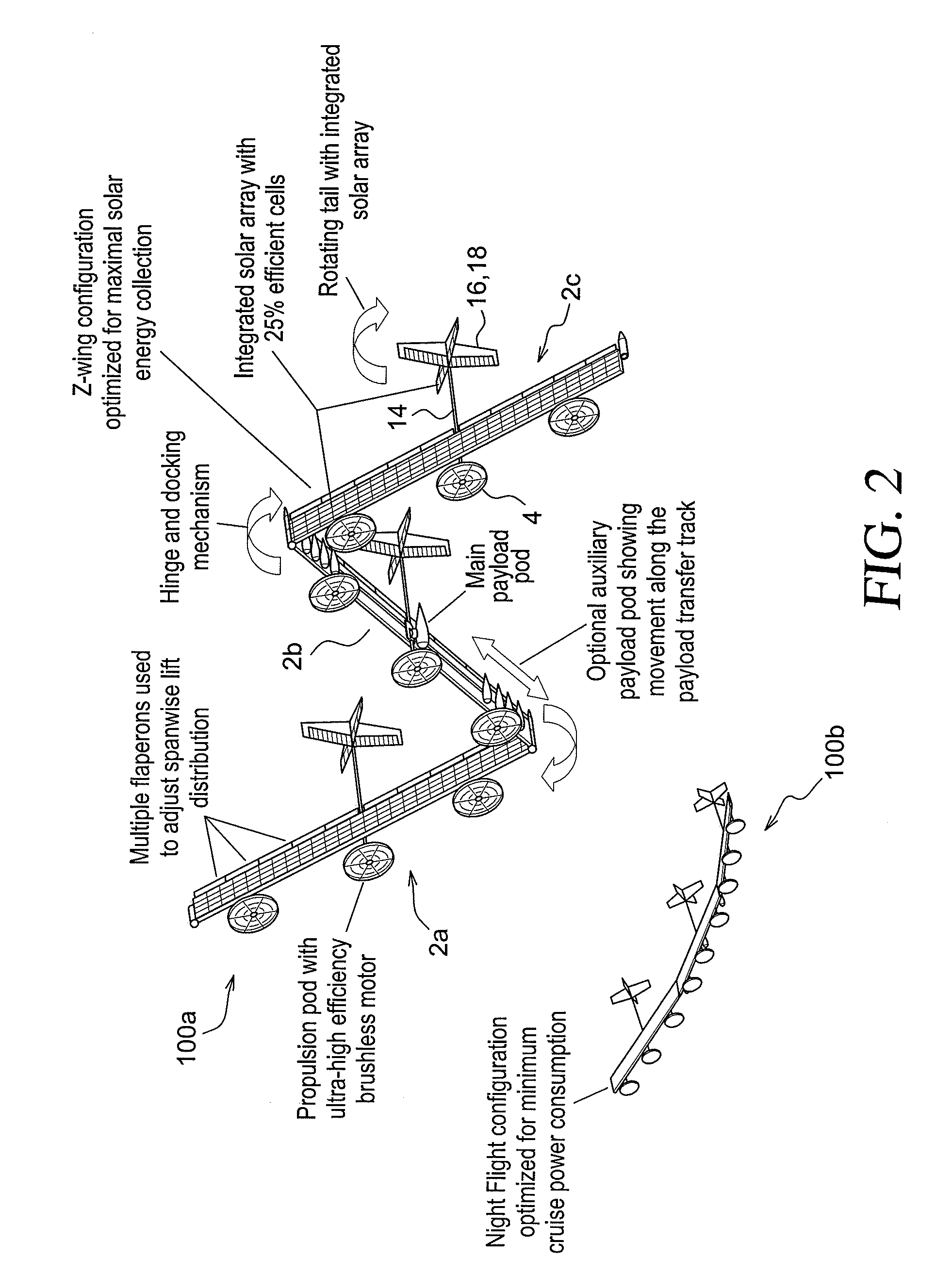Non-planar adaptive wing solar aircraft
a solar aircraft and adaptive technology, applied in the field of solar powered aircraft, can solve the problems of control system instability, failure of wing covering, and especially critical night time power usag
- Summary
- Abstract
- Description
- Claims
- Application Information
AI Technical Summary
Benefits of technology
Problems solved by technology
Method used
Image
Examples
Embodiment Construction
[0069]The various features of the preferred embodiments will now be described with reference to the drawing figures, in which like parts are identified with the same reference characters. The following description of the presently contemplated best mode of practicing the invention is not to be taken in a limiting sense, but is provided merely for the purpose of describing the general principles of the invention.
[0070]According to exemplary embodiments, the system and method for a non-planar adaptive wing structure can work on several different types of aircraft. According to a preferred embodiment, the system and method for a non-planar adaptive wing structure can work on a solar powered aircraft. Thus, the discussion below should not be construed to be limited to any one particular type of aircraft. By way of example only, and according to a preferred embodiment, discussion is made of light, unmanned aerial vehicles. More particularly, and according to a preferred embodiment, the d...
PUM
 Login to View More
Login to View More Abstract
Description
Claims
Application Information
 Login to View More
Login to View More - R&D
- Intellectual Property
- Life Sciences
- Materials
- Tech Scout
- Unparalleled Data Quality
- Higher Quality Content
- 60% Fewer Hallucinations
Browse by: Latest US Patents, China's latest patents, Technical Efficacy Thesaurus, Application Domain, Technology Topic, Popular Technical Reports.
© 2025 PatSnap. All rights reserved.Legal|Privacy policy|Modern Slavery Act Transparency Statement|Sitemap|About US| Contact US: help@patsnap.com



